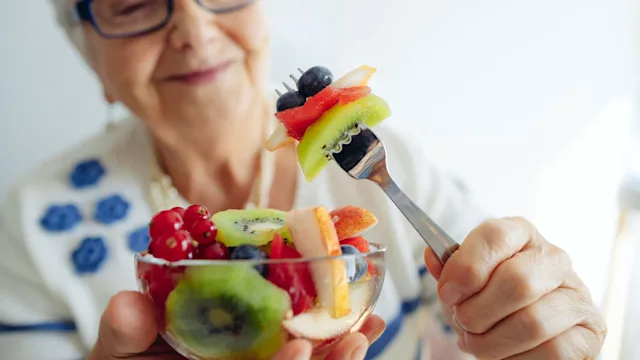Key takeaways:
Processed food means any food that has gone through some kind of change, like canning, drying, and fermenting.
Processed foods with little to no additives can be a part of a well-rounded diet. Examples include canned vegetables, whole grain breads, and dairy products.
Foods that are heavily processed, also called ultra-processed foods, can be unhealthy. They contain food-like substances that are bad for your health, as well as added sugar, salt, and unhealthy fats.
Processed foods might seem like a recent phenomenon. But food processing has been around for hundreds of thousands of years, if not more. Using fire to cook food is one of many forms of food processing.
While the term “processed food” gets a lot of bad press, not all processed foods are bad or unhealthy. In fact, some processed foods can be a healthy, convenient, and nutritious part of your diet. Understanding the different types of processed foods can help you make choices that support your health.
What is considered processed food?
Processed food is any food that has been altered or changed in one or more ways. The term "processed food" is quite broad, so you could say that most foods are processed.
For example, washed, chopped, or peeled vegetables are considered processed foods. Yogurt is a processed food because it’s pasteurized and fermented. Other processed foods go through many more changes that affect everything from their nutritional value and appearance to their taste. This includes processes such as:
Washing
Chopping
Peeling
Grinding
Mixing
Cooling
Heating (or pasteurizing)
Blanching
Freezing
Fermenting
Drying
Canning
Packaging
What are the types of processed foods?
Several methods have been created to classify the types of processed foods. The most commonly used method is the NOVA food classification system. This system places processed foods into four groups.
Group 1: Unprocessed or minimally processed foods
This category includes unprocessed foods such as fresh fruits and vegetables, whole grains, and eggs, as well as minimally processed foods. Minimally processed foods go through small changes like washing or chopping. But they retain most of their nutrients.
Here are some examples of the least-processed foods.
Process | Food examples |
Freezing | Frozen berries, green beans, fish, meat |
Drying | Raisins, dried figs, dried beans |
Roasting | Coffee beans, roasted nuts, roast chicken |
Grinding | Ground flax seeds, tea |
Pasteurizing | Yogurt, milk, cream |
Vacuum packaging | Pre-cooked beets, cheese |
Group 2: Processed culinary ingredients
Processed foods in group 2 are natural foods made using manual processes like pressing, grinding, and refining. These are common ingredients you use in cooking, rather than food you eat on its own. Below is a closer look at some examples.
Read more like this
Explore these related articles, suggested for readers like you.
Processing | Food examples |
Pressing | Oil (from olive, avocado, walnut) |
Extracting | Honey (from honeycomb), maple syrup (from maple trees) |
Refining | Sugar (from sugarcane), molasses (from beet) |
Mining | Sea salt (from seawater or salt mines) |
Milling | Flour (from grains) |
Grinding | Spices (from peppers, fruit peels, roots) |
Group 3: Processed foods
This group combines foods from group 1 and group 2. Processed foods in this group often have extra salt, sugar, oil, or other ingredients that make them taste better and last longer. Foods in this group usually contain no more than three ingredients. Let’s take a look at some examples.
Processing | Food examples |
Bottling | Olives in brine, pickled vegetables |
Canning | Chickpeas, corn, beans, mixed vegetables, coconut cream |
Non-alcoholic fermentation | Breads, cheeses |
Packaged | Fruit cups, sardines, soups, steamed lentils |
Salted | Nuts, seeds, pork |
Smoked | Salmon, ham |
Group 4: Ultra-processed foods
Ultra-processed foods undergo a lot of processing and changes. They use food-like substances, such as potato starch and protein extracted from foods, and contain many added ingredients, such as food dyes, thickeners, and artificial flavors.
They're often more affordable than less processed foods, have lower nutritional value, and are easy to overeat. They also are more likely to contain unhealthy fats, added sugars, and excess salt.
Here are some examples of ultra-processed foods:
Salty packaged snacks, like chips, pretzels, and crackers
Store-bought baked goods, like cakes, cookies, pastries, and many packaged breads
Many ready-to-eat meals, whether fresh or frozen
Frozen meals, like pizzas or nuggets
Many fast foods, like fries, burgers, and hot dogs
Breakfast cereals
Frozen desserts, like ice cream
Candy
Soda
Condiments, like ketchup, barbeque sauce, and cheese dips
Advantages and disadvantages of processed foods
There are benefits and drawbacks to adding processed foods to your plate. The main difference lies in the degree of processing.
Advantages of processed foods
Humans have processed food for thousands of years to make it taste better and last longer. Processed foods have many advantages:
Lower risk of spoilage: Certain processing techniques, like pasteurizing, use heat to remove harmful bacteria from foods like yogurt and milk. Similarly, canned and vacuum-packed foods last longer than fresh foods. Stocking your pantry with these processed foods can help reduce food waste and allow you to enjoy a variety of foods year round.
More convenient: Processed foods can save time, making healthier eating more accessible. For example, keeping frozen broccoli in the freezer is a convenient way to heat and eat the vegetable without needing to wash and chop it.
Affordability: Some processed foods — like frozen or canned vegetables and fruit — may be less expensive than fresh versions. These foods may make it more convenient to eat nourishing foods without breaking the bank.
Disadvantages of processed foods
The disadvantages of processed foods mainly have to do with ultra-processed foods rather than all processed foods. Here are a couple of examples:
High in added ingredients: Ultra-processed foods are high in added sugar, salt, and unhealthy fats. Eating too many of these foods has been linked to a higher risk of several health conditions, including heart disease, diabetes, and cancer.
Easy to overeat: Ultra-processed foods are typically low in nutrients and fiber, making them less filling. These foods are also modified to be tastier and attractive. Together, these factors can make ultra-processed foods easy to overeat.
How much processed food is OK to eat?
There isn't a set recommendation for how much processed food to eat. This is because the term "processed food" includes a variety of foods. And eliminating all processed foods from your diet is unrealistic and unnecessary. Remember — most foods undergo some degree of processing.
Try to get most of your foods from NOVA food classification groups 1, 2, and 3. A great way to do this is to choose whole foods wherever possible. If you are buying packaged foods, choose ones with fewer ingredients. Look for ingredient names you’re familiar with, too. If the ingredients you see are not ones you’d find in your kitchen, that’s a sign that the food is likely ultra-processed.
When it comes to ultra-processed foods, limit these as much as you can. These foods offer very few nutrients. They also have added food-like substances that can increase your risk of many health conditions and lead you to feel hungry sooner.
How to eat less processed food
While you don’t have to completely avoid processed foods, it’s always a good idea to focus on ways to eat more whole, minimally processed foods.
Here are ways to eat less ultra-processed food.
Eat home-cooked meals
By cooking at home, you control the ingredients and how much fat, salt, and sugar are in each recipe. You don't have to be a chef to cook at home, either. Simple ingredients make delicious meals.
Incorporate frozen fruits and vegetables
Frozen fruits and vegetables typically have only one or two ingredients, making them a convenient and healthy option. The same goes for canned beans and vegetables; they're minimally processed and can make your life easier.
Stock your fridge in advance
You're more likely to make less-processed choices if your fridge is stocked in advance. You can purchase the ingredients for nourishing recipes or prepare meals beforehand — whatever works best for you. Being prepared also reduces the temptation to rely on ultra-processed, convenient foods.
Examine food labels closely
Many packaged and processed foods contain sneaky amounts of added sugars, salt, and unhealthy fats, like saturated and trans fats. Be sure to read food labels and aim for products with fewer ingredients. In general, food is less processed if it has fewer ingredients.
The bottom line
Processed foods are foods that have been altered in some way, such as pre-chopped veggies, frozen fruit, or salted meat. Most foods humans eat are processed to some degree.
You don't need to eliminate all processed foods from your diet. In fact, many diet staples, like bread, eggs, cheese, and yogurt, are processed yet nutritious options.
But it is important to limit ultra-processed foods, like soda, packaged snacks, and baked goods. Ultra-processed foods won’t add much nutritional value to your diet. When possible, focus on unprocessed or minimally processed foods to help you feel your best.

Why trust our experts?



References
Chen, X., et al. (2020). Consumption of ultra-processed foods and health outcomes: A systematic review of epidemiological studies. Nutrition Journal.
de Araújo, T. P., et al. (2022). Food processing: Comparison of different food classification systems. Nutrients.
Forde, C. G., et al. (2022). The importance of food processing and eating behavior in promoting healthy and sustainable diets. Annual Review of Nutrition.
Huebbe, P., et al. (2020). Historical reflection of food processing and the role of legumes as part of a healthy balanced diet. Foods.
Miller, S. R., et al. (2014). Nutrition and cost comparisons of select canned, frozen, and fresh fruits and vegetables. American Journal of Lifestyle Medicine.
Monteiro, C. A., et al. (2019). Ultra-processed foods, diet quality, and health using the NOVA classification system. Food and Agriculture Organization of the United Nations.
O’Connor, A., et al. (2023). Melted, pounded, extruded: Why many ultra-processed foods are unhealthy. The Washington Post.
Rahkovsky, I., et al. (2018). What drives consumers to purchase convenience foods? U.S. Department of Agriculture.
U.S. Environmental Protection Agency. (n.d.). Canned fruits and vegetables.

















